推荐系统推理优化
推荐系统(RecSys) - “沉默的大多数”
互联网企业
-
“在阿里和很多互联网企业中有一个“沉默的大多数”的应用,就是推荐系统:它常常占据了超过80%甚至90%的机器学习算力。”
-
Facebook AI cycles allocation
推荐系统占据了Facebook 50%的AI训练算力,80%的AI推理算力。
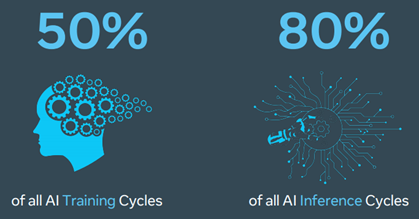
算力提供商
RecSys黑盒
输入-输出
在给定用户和用户上下文(如入口、时间、地域、用户的人口统计学数据等)的情况下,计算用户与库存(如商品、文章、用户等)发生交互(如点击、购买、连接等)的概率,并筛选最有可能 个库存推荐给用户,促成交互和转化。
个库存推荐给用户,促成交互和转化。

KPI
-
算法KPI - 开源
提高用户对推荐结果的交互率和转化率,这个是算法研究的范畴。 -
性能KPI - 可用+节流
Latency-Bound Throughput,在满足要求的延时SLA(Service Level Agreement)的条件下,提高系统的吞吐。这个是系统的范畴。
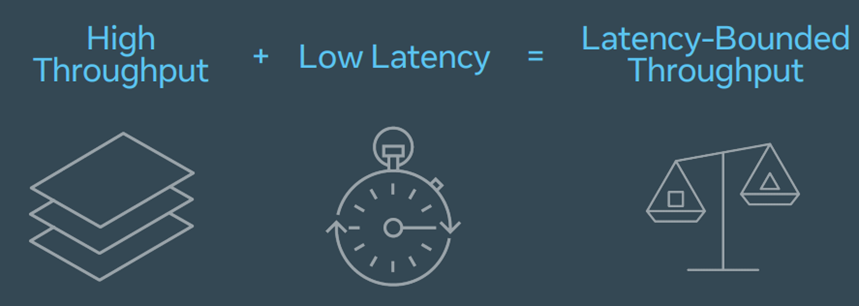
如:
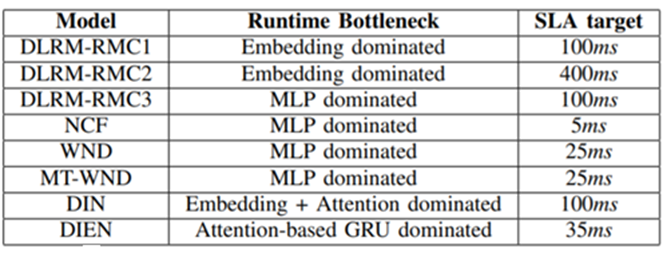
RecSys算法模型
RecSys算法分类
算法设计上,大致可以按下图来划分。目前主流工业使用以DNN models为主,这也是本文的目标workload。

DNN RecSys模型范式
DNN RecSys Model = Feature Engineering + Feature Interaction + Predictor DNN
不同的feature engineering, feature interaction和predictor DNN的选型造就了不同的模型和workload特性。
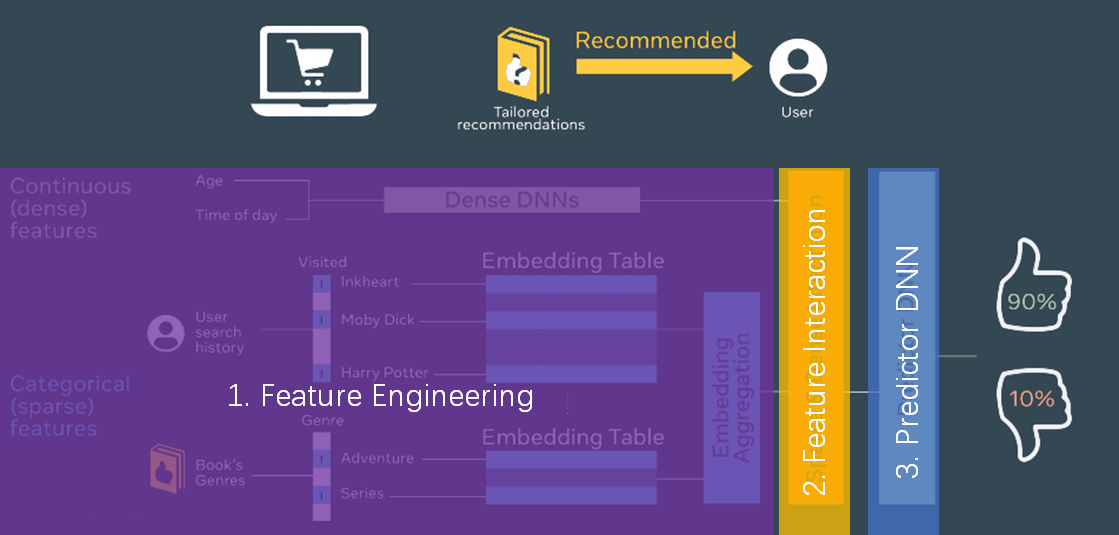
典型DNN RecSys模型
-
Wide and Deep Learning (WDL)
-
Deep Interest Network (DIN)
-
Deep Interest Evolution Network (DIEN)
-
Deep Learning Recommendation Model (DLRM)
WDL
-
算法主要思路
Wide for memorization, deep for generalization -
选型
-
Feature Engineering
-
embedding_lookup
-
hash bucketing
-
slice (tensor manipulation)
-
concat (tensor manipulation)
-
dense fc
-
-
Feature Interaction
-
concat (tensor manipulation)
-
MLP (Multi-Layer Perception)
-
-
Predictor DNN
-
fc
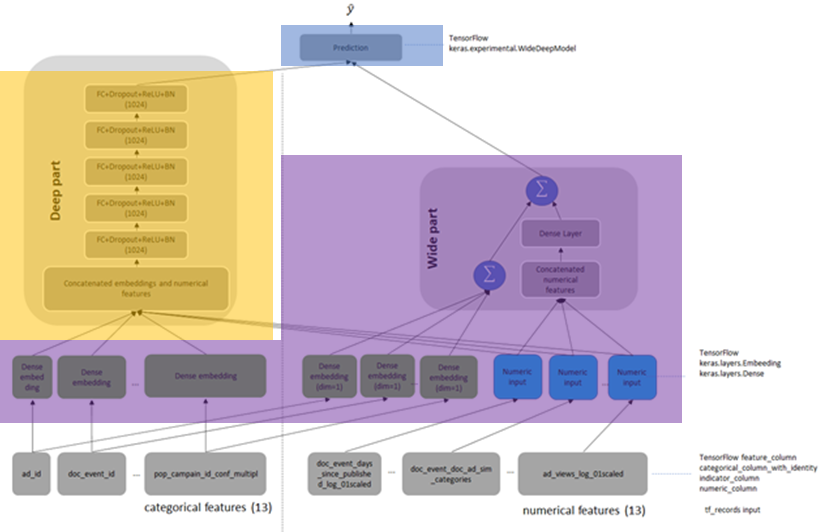
-
-
DIN
-
算法主要思路
Attention, weighting interaction influence with similarity -
选型
-
Feature Engineering
-
embedding_lookup
-
concat (tensor manipulation)
-
-
Feature Interaction
-
batch matrix multiplication
-
sum pooling (tensor manipulation)
-
concat (tensor manipulation)
-
-
Predictor DNN
-
MLP

-
-
DIEN
-
算法主要思路
Introduce time-decay effect to attention -
选型
-
Feature Engineering
-
embedding_lookup
-
concat (tensor manipulation)
-
-
Feature Interaction
-
GRU (Gated Recurrent Unit)
-
concat (tensor manipulation)
-
-
Predictor DNN
-
MLP
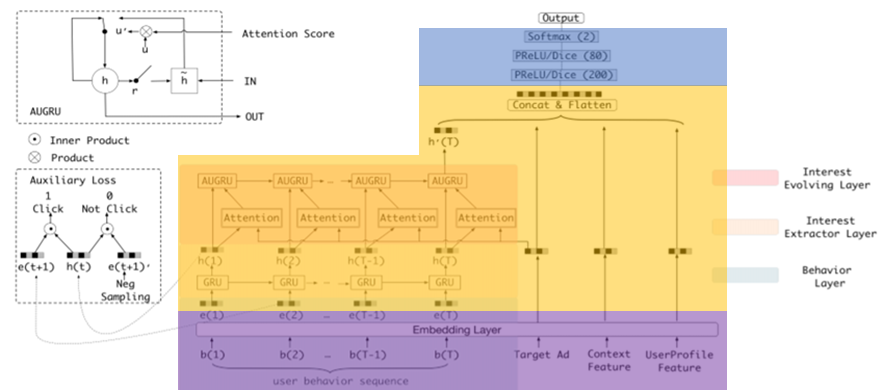
-
-
DLRM
-
算法主要思路
Interaction using auto-correlation -
选型
-
Feature Engineering
-
embedding_lookup
-
sum pooling (tensor manipulation)
-
fc
-
-
Feature Interaction
-
batch matrix multiplication
-
-
Predictor DNN
-
MLP
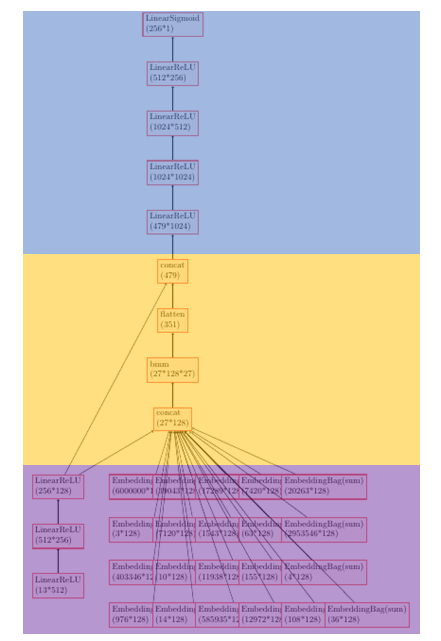
-
-
DNN RecSys模型特征
Small Tensor + Big Model
-
Each record of Criteo TeraByte Dataset
13 numerical features + 26 categorical feature = 156 B -
DLRM open-source Model
~24 billion parameters = 96 GB, most of them are embedding tables
It leads to lower Computational Intensity than CNN workloads.
Tensor Operations matter
Tensor operations which are Embedding Lookup & Tensor Manipulation occupy a non-negligible part.

Workload Heterogeneity
Diverse combinations of  lead to workload heterogeneity.
lead to workload heterogeneity.

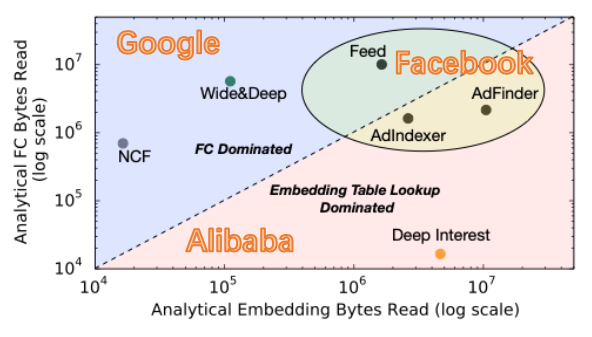
RecSys workload性能优化
Overview
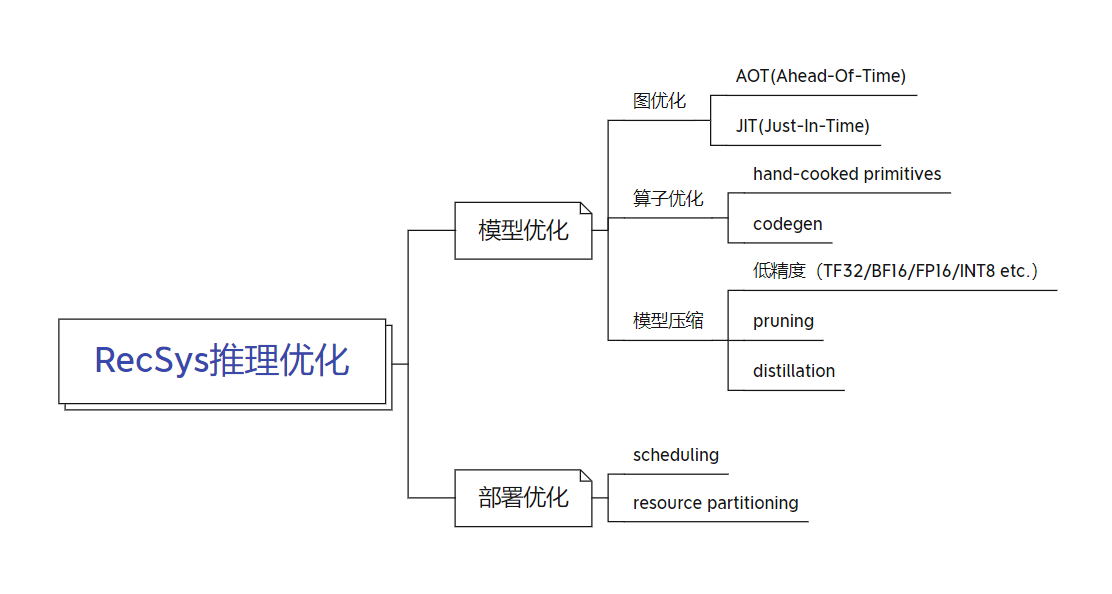
其中,模型优化专注于优化模型自身的性能,部署优化专注于优化模型在部署环境尤其是混部环境下的性能。
模型优化
优化Principles
-
#1. Minimize system(HW/SW) overheads
-
minimize scheduling overhead
-
minimize function calls
-
use thread pool
-
use big thread (i.e. graph fusion/stitching)
-
-
[accelerator cases] minimize kernel launch overhead
-
use big kernel (i.e. graph fusion)
-
-
-
#2. Roofline analysis driven TFLOPS improvement
-
improve attainable TFLOPS

-
improve actual TFLOPS
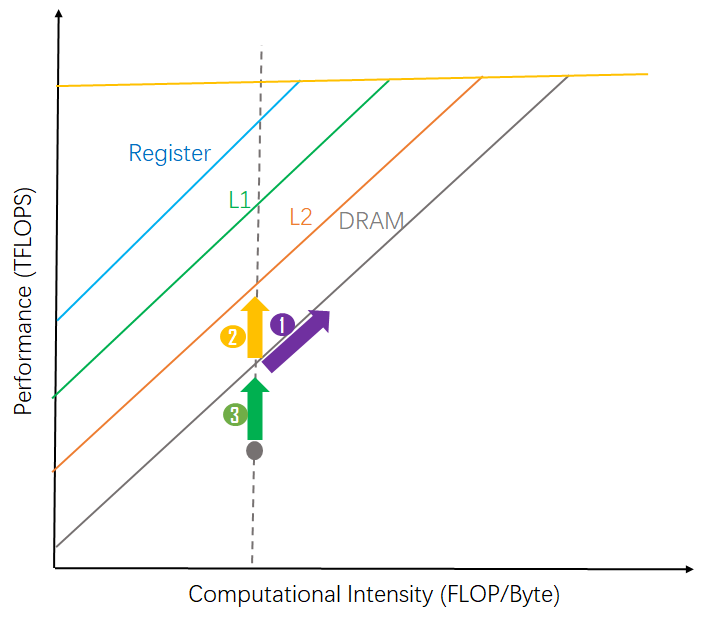
1 - improve computational intensity by decreasing
2 - improve attainable TFLOPs by improving peak memory BW
3 - improve actual TFLOPS -
Tensor Operation Sub-graph
主要优化方法
graph fusion/stitching
涉及的优化principles
-
[#1] minimize kernel launch overhead
-
[#1] minimize unnecessary bad argument check
-
[#2.2] in-register/cache computing
-
[#2.3] more parallelism
Case Studies
-
embedding_lookup fusion
Facebook multiple embedding_lookup fusion brings 7x unit level performance improvement.
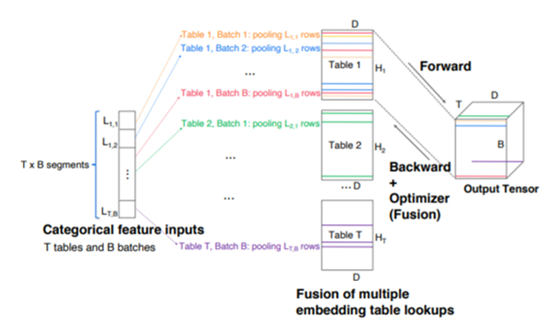
-
tensor manipulation sub-graph fusion
Feature engineering sub-graph fusion brings 2x unit level performance improvement w/ XLA CPUInstructionFusion pass.
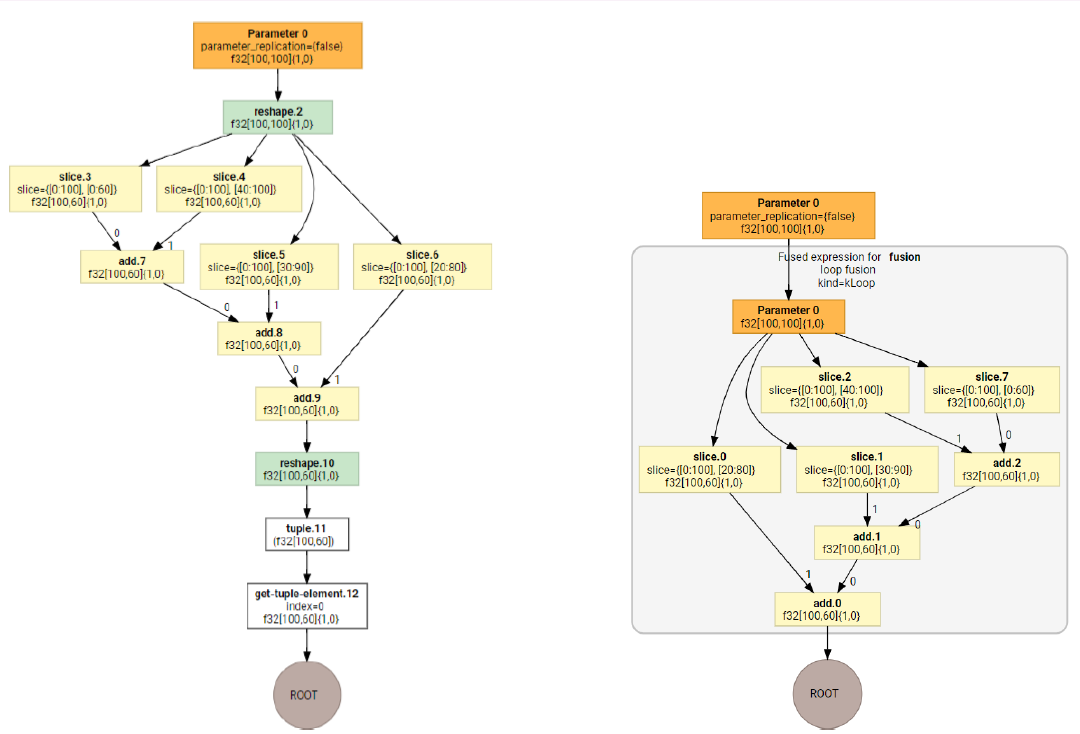
FC&Attention Sub-graph
Sub-graph fusion
MatMul + BiasAdd + Activation
“MatMul + BiasAdd + Activation” 是FC子图中的典型子图,也是graph optimizer(如TF Grappler等)一般都会实现的graph optimization pass。目前主要是基于模板匹配的方式来实现。

在RecSys中的一个复杂性在于,对于同一个”MatMul + BiasAdd + Activation”语义,经常会有不同子图形式,下面给出两种:


可以看到,虽然上述两个子图语义上仍然是”MatMul+BiasAdd+Activation”, 但由于形式上已经产生变化,基于模板匹配的子图融合pass对他们并不能正确地辨识和融合,需要使用更高抽象度的融合pass去辨识。实践也表明,增强的pass会给线上inference带来20%左右的latency减少。
Multi-Head Attention
Multi-Head Attention作为attention结构的基本子图,仔细分析并做极致优化是非常有必要的。
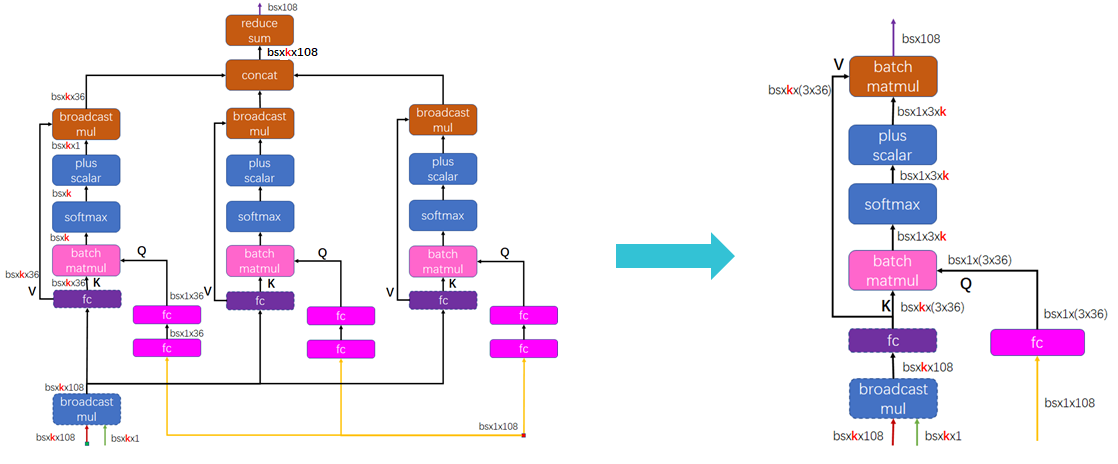
Operator optimization
Increase Computation Intensity
-
reduce precision: FP32 → BF16
-
reduce data traffic
-
FC: keep packed weight to amortize weight packing traffic
-
DLRM batchMatMul – only load A while compute AAT by leveraging HW transposer
-
DLRM index – de-duplicate indices
remove data traffic
data traffic
-
Increase Peak Memory BW
-
Improve cache residence
Example
假想系统参数 L2$ peak BW(TB/s) 4 HBM2e peak BW(TB/s) 0.8 BF16 peak TFLOPS 512
部署优化
Problem statement
Mixed deployment brings deployment optimization
-
Model co-location brings performance variance (noisy neighbors)
-
Optimal hardware varies across dynamic batch size([1, 100]) & different models

前期探索
Facebook proposed DeepRecSched to search good deployment configurations with dry-run. Facebook的实验报告了在CPU上~2x的QPS,在GPU上~5x的QPS。
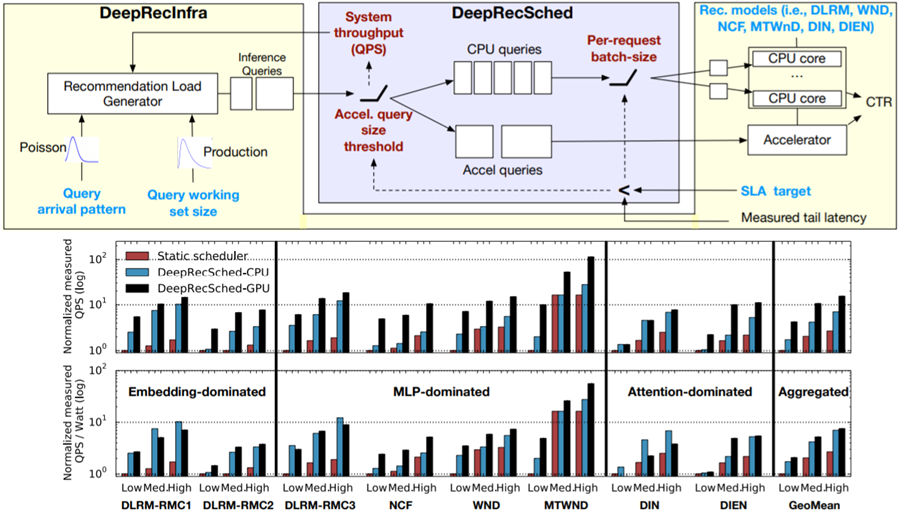
其他
其他探索可见《深度学习推理性能优化》 部署优化部分。
Micro-Architecture探索
主要有两个方向:
-
近内存计算
代表性的工作有Facebook的NMP(Near Memory Processor), 主要是通过把embedding_lookup_reduction操作放到内存模组里面来完成,从而在不提高内存的物理带宽的前提下提高有效带宽。Facebook报告了9.8x的延时减少和4.2x的吞吐提高,基于内部的embedding-dominated的模型族。

-
data pipeline in SoC
-
Intel
Intel 计划在Sapphire Rapids CPU中引入一些data accelerator IP, 如DSA(Data Streaming Accelerator)。把memory intensive的部分从CPU指令中解放出来,offload到一个专门的IP中来实现。这为实现片上data pipeline、提高workload吞吐提供了一种可能。

References
-
DeepRecSys: A System for Optimizing End-To-End At-scale Neural Recommendation Inference
-
The Architectural Implications of Facebook’s DNN-based Personalized Recommendation
-
Cross-Stack Workload Characterization of Deep Recommendation Systems
-
High-performance, Distributed Training of Large-scale Deep Learning Recommendation Models
-
Accelerating the Wide & Deep Model Workflow from 25 Hours to 10 Minutes Using NVIDIA GPUs
-
Applying the Roofline Model for Deep Learning performance optimizations
-
RecNMP: Accelerating Personalized Recommendation with Near-Memory Processing
-
MicroRec: Efficient Recommendation Inference by Hardware and Data Structure Solutions
-
AI Matrix: A Deep Learning Benchmark for Alibaba Data Centers
-
Deep Learning Recommendation Model for Personalization and Recommendation Systems
-
Optimizing Recommendation System Inference Performance Based on GPU
-

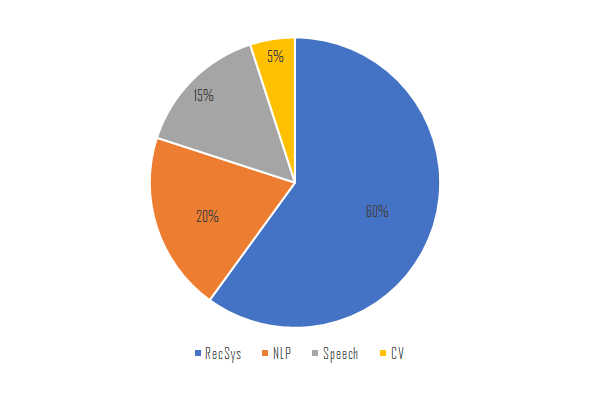



 浙公网安备 33010602011771号
浙公网安备 33010602011771号